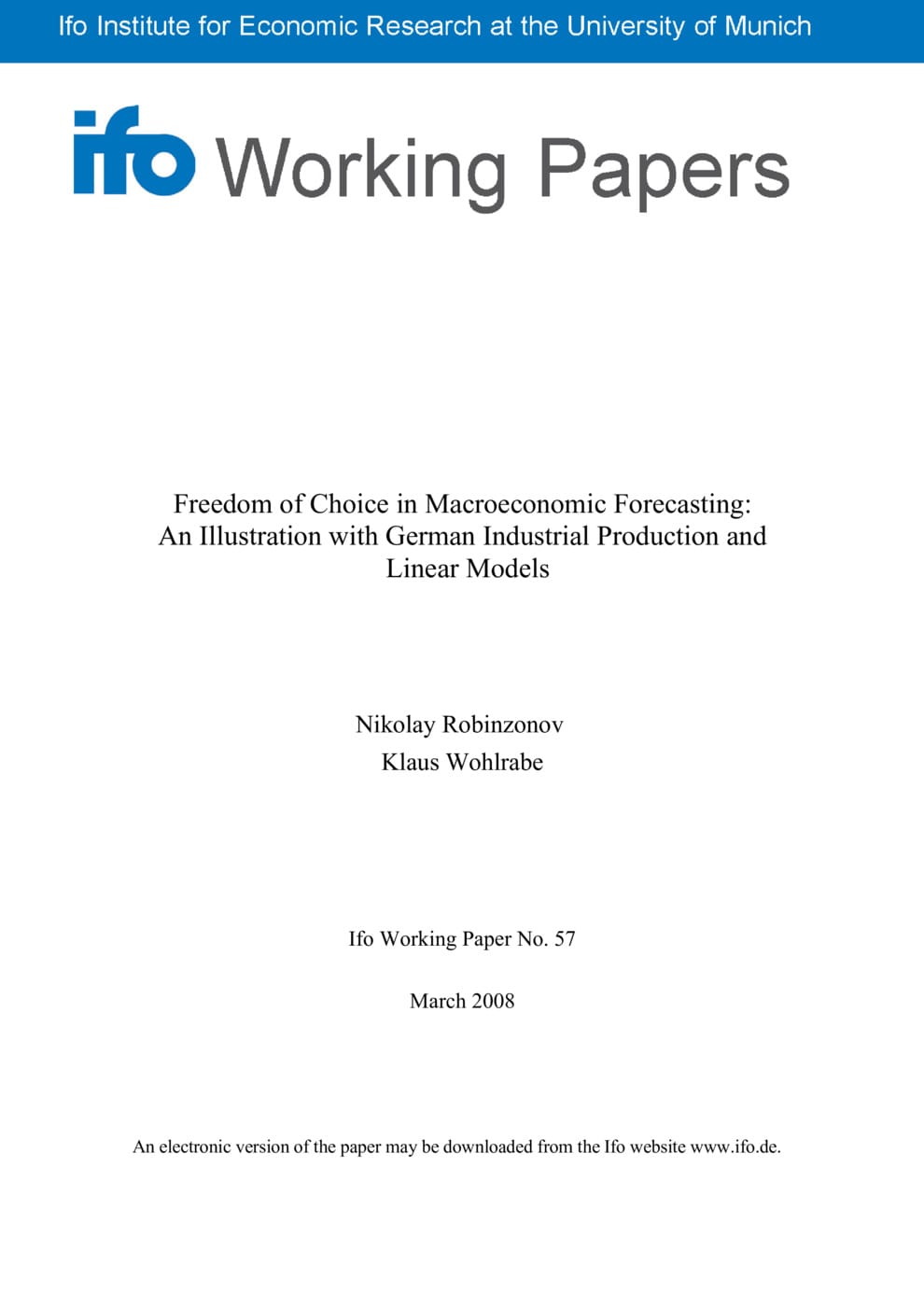Freedom of Choice in Macroeconomic Forecasting: An Illustration with German Industrial Production and Linear Models
ifo Institut für Wirtschaftsforschung, München, 2008
Ifo Working Paper No. 57

Different studies provide surprisingly a large variety of controversial conclusions about the forecasting power of an indicator, even when it is supposed to forecast the same time series. In this study we aim to provide a thorough overview of linear forecasting techniques and draw conclusions useful for the identification of the predictive relationship between leading indicators and time series. In a case study for Germany we forecast four possible representations of industrial production. Further on we consider a large variety of time-varying specifications: ex post vs. ex ante, rolling vs. recursive and model specifications such as restricted vs. unrestricted, AIC vs. BIC vs. OSC, direct vs. indirect. In a horse race with nine leading indicators plus benchmark we demonstrate the variance of assessment across target variables and forecasting settings (50 per horizon). We show that it is nearly always possible to find situations in which one indicator proved to have better predicting power compared to another.